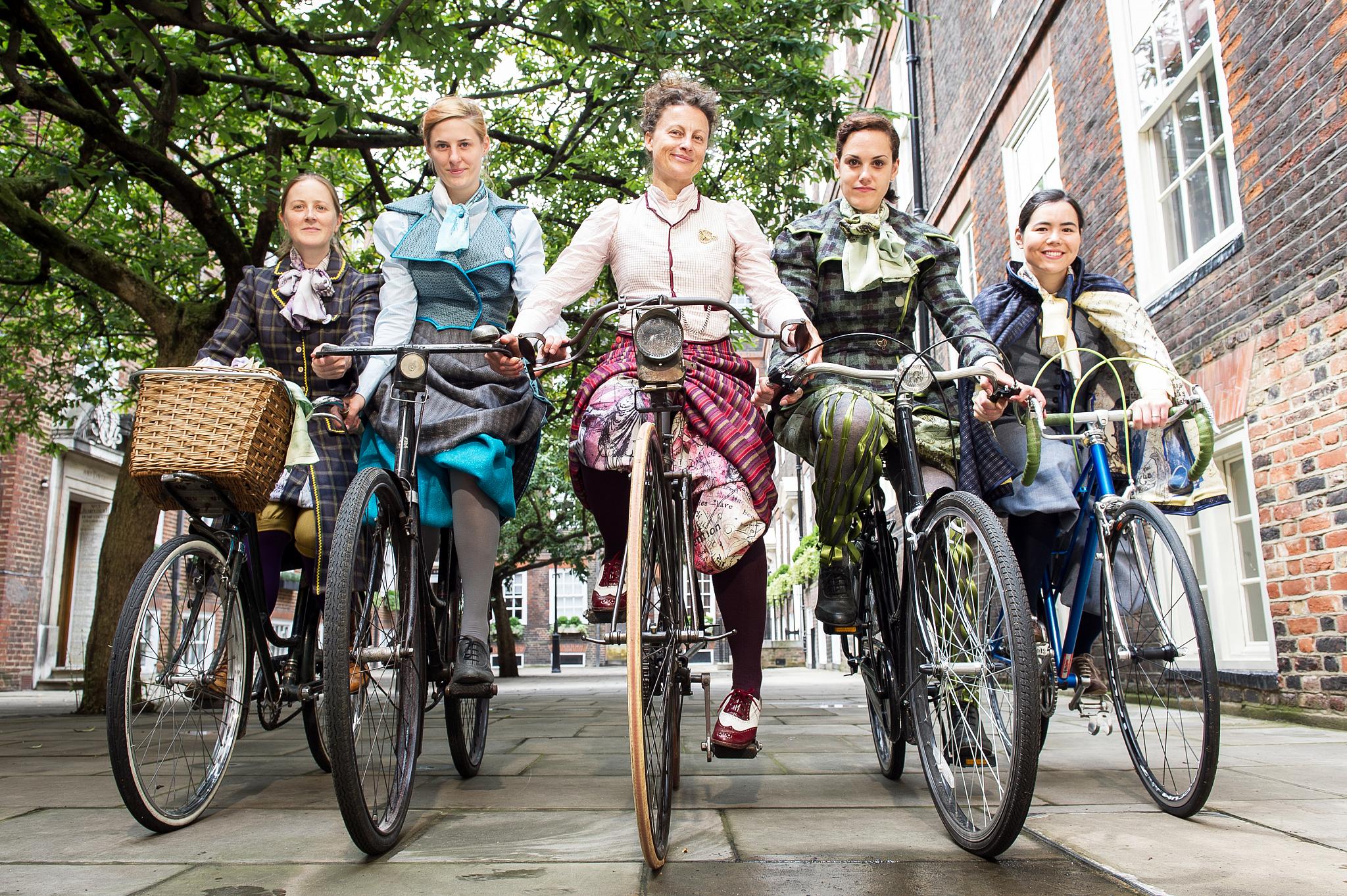Convertible skirts that helped Victorian women cyclists claim new social and political freedoms
Primary page content
Victorian women forged new and mobile public lives through pioneering cycle wear designs, research from a Goldsmiths, University of London academic has shown.

The pioneering outfits remade by Kat Jungnickel
Dr Kat Jungnickel has revealed how Victorian women cyclists used their clothing to protest against restrictive ideas of how a woman should act and move in public. She has also uncovered patents for and remade a number of the pioneering inventions.
“The bicycle in Victorian Britain is often celebrated as a vehicle of women’s liberation,” Dr Jungnickel said, “but less is noted about another vehicle through which women forged new mobile public lives – cycle wear.”
Middle and upper-class women were enthusiastic cyclists in the late nineteenth century. However, ordinary fashions were uncomfortable and dangerous on the bike and it was not uncommon for onlookers to hurl abuse and stones at identifiable cyclists.
In response, inventive women patented convertible garments that enabled wearers to secretly switch between walking and cycling identities, so they could cycle safely and avoid harassment.
Dr Kat Jungnickel on Bikes & Bloomers